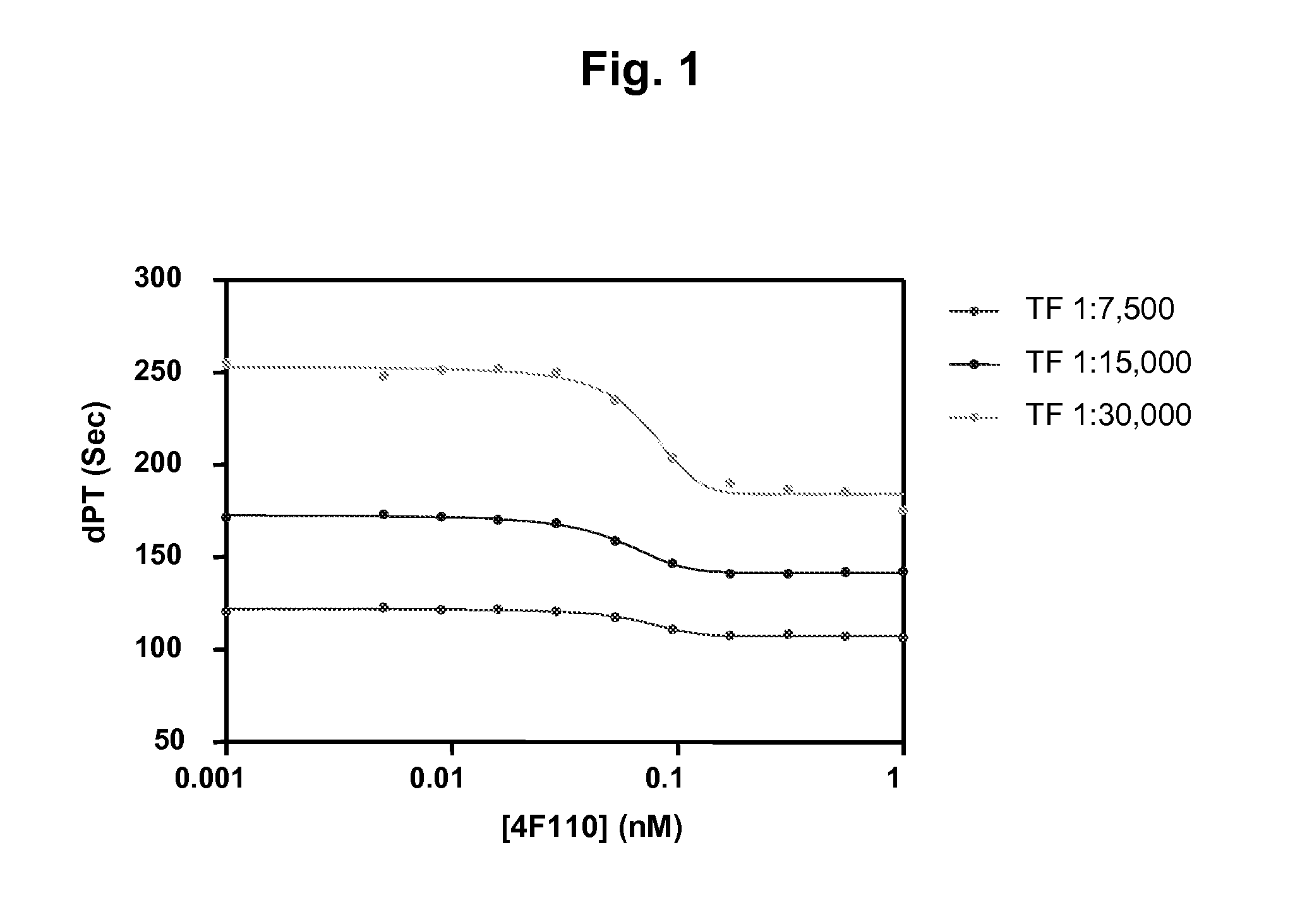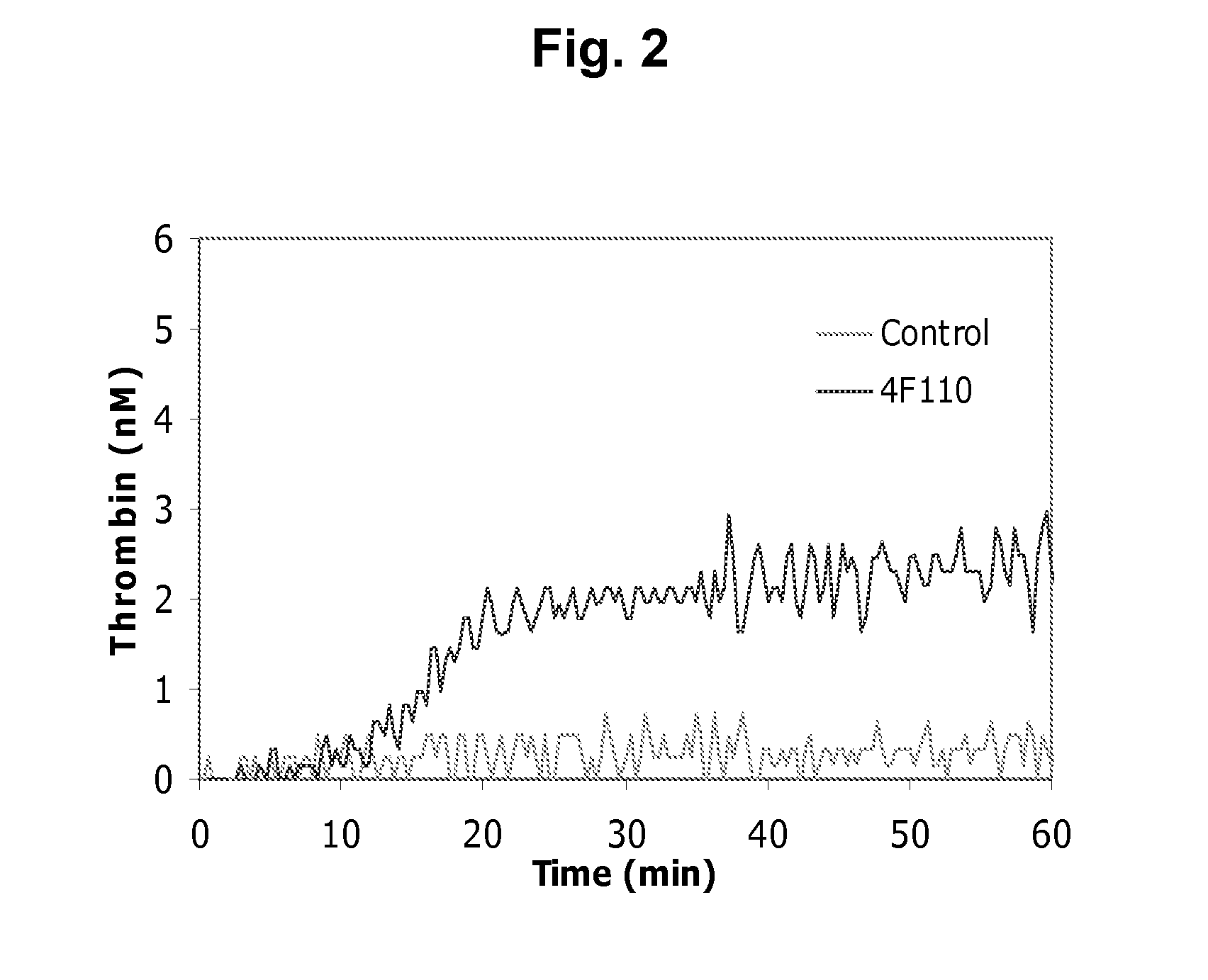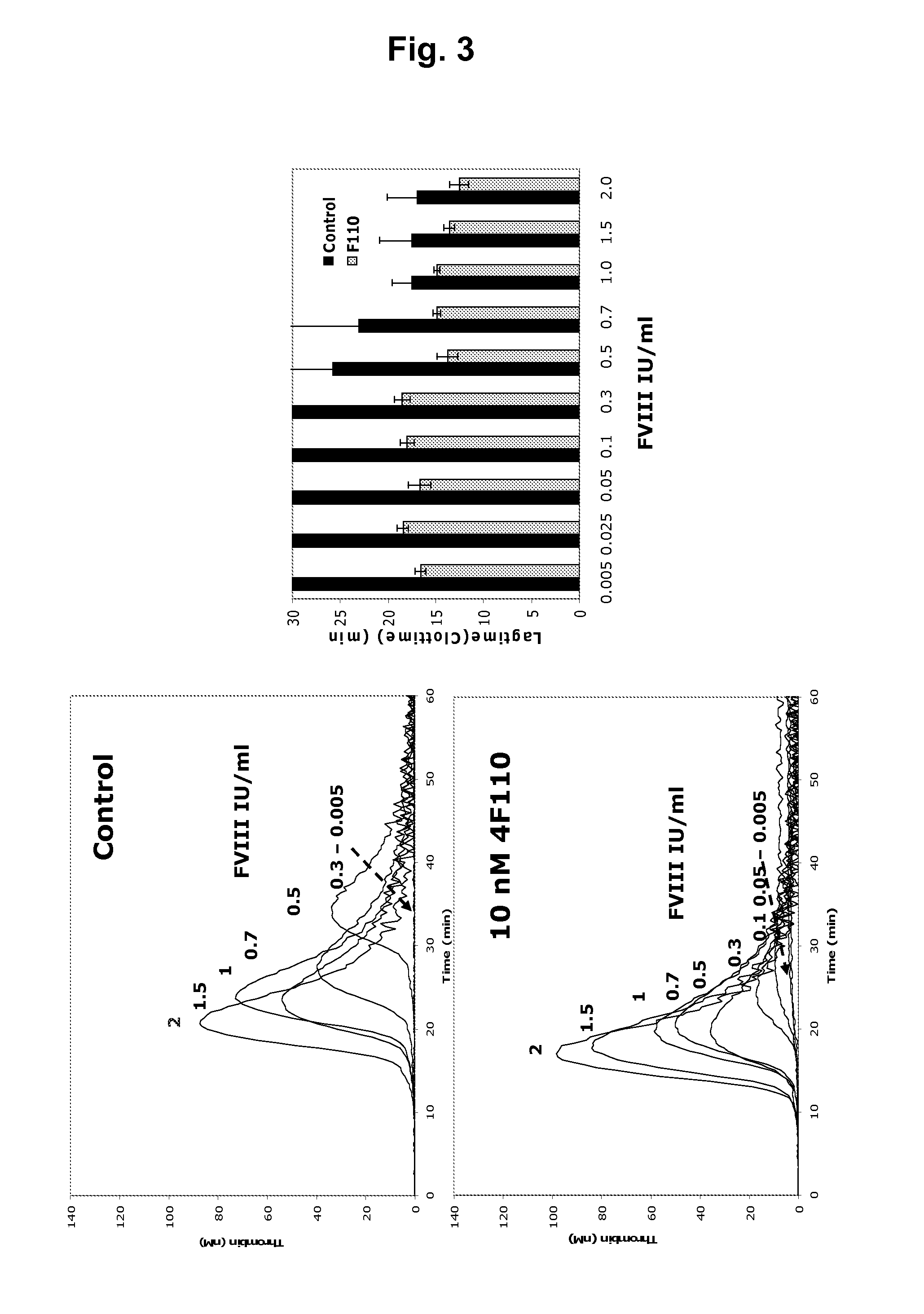Antibodies That Are Capable of Specifically Binding Tissue Factor Pathway Inhibitor
a technology of specific binding and tissue factor, which is applied in the direction of antibody medical ingredients, drug compositions, extracellular fluid disorders, etc., can solve the problems of ineffective formerly efficient therapy, insufficient blood coagulation, potentially life-threatening bleeding, etc., and achieve the effect of substantial impact on the quality of life of—no
- Summary
- Abstract
- Description
- Claims
- Application Information
AI Technical Summary
Benefits of technology
Problems solved by technology
Method used
Image
Examples
example 1
Immunisation and Fusion
[0330]Mice were immunized with full length TFPI (SEQ ID NO: 1). RBF mice were used for immunizations and production of mouse monoclonal antibodies. Injections were made subcutaneously in the back of the mice. 20 μg TFPI was mixed with complete Freund's adjuvant for the first injection. In the subsequent immunizations, incomplete Freund's adjuvant was used with same concentration of the antigen. Ten days after the last immunization, eye-blood from mice was screened, using ELISA, for TFPI specific antibodies. Mice with positive serum titres were boosted with 10 μg of TFPI by intravenous injection, and sacrificed after three days. The spleens were removed aseptically and dispersed to a single cell suspension. Fusion of spleen cells and myeloma cells was done by the PEG-method or by electrofusion.
Screening Procedure
[0331]Screening for binding to full length TFPI and no binding to TFPI(1-161)[0332]Cellular assays with endothelial cell lines or TF & TFPI transfected...
example 2
Cloning and Sequencing of Mouse Anti-TFPI K3 / C-Terminal Specific mAbs
[0338]This example describes cloning and sequencing of the murine heavy chain and light chain sequences of anti-TFPI antibodies MuTFPI4F110, MuTFPI22F66 and MuTFPI22F71.
[0339]Total RNA was extracted from hybridoma cells using the RNeasy-Mini Kit from Qiagen and used as template for cDNA synthesis. cDNA was synthesized in a 5′-RACE reaction using the SMART™ RACE cDNA amplification kit from Clontech. Subsequent target amplification of HC and LC sequences was performed by PCR using Phusion Hot Start polymerase (Finnzymes) and the universal primer mix (UPM) included in the SMART™ RACE kit as forward primer. The sequence of the reverse primer used for HC (VH domain) amplification is given in SEQ ID NO: 16. The sequence of the reverse primer used for MuTFPI22F66 and MuTFPI22F71 LC (VL domain) amplification is given in SEQ ID NO: 17. The sequence of the reverse primer used for MuTFPI4F110 LC amplification is given in SEQ ...
example 3
Dilute Prothrombin Time (dPT)
[0342]A dilute prothrombin (PT) analysis with human plasma in combination with diluted human thromboplastin. Clot time in the plasma was measured upon addition of increasing protein A purified TFPI monoclonal antibody concentrations to look for dose dependent reduction of clotting time with the mAbs of interest.
[0343]120 μl citrate-stabilized FVIII-depleted plasma (Helena) was mixed with 5 μl MuTFPI4F110 at various final concentrations (0.0-1.0 nM) and incubated for 15 min at room temperature. Clotting was measured by ACL300 analysis at 37° C. Coagulation was initiated by mixing 75 μl plasma with 75 μl reagent containing 0.02 M CaCl2 and 1:3,750; 1:7,500; or 1:15,000 dilution of lipidated tissue factor (TF) (Innovin®) in 20 mM Hepes, 150 mM NaCl, pH 7.4. As shown in FIG. 1, MuTFPI4F110 shortened the clotting time in a concentration dependent manner at all three TF concentrations.
[0344]Only a fraction of TFPI present in plasma contains an intact C-termina...
PUM
| Property | Measurement | Unit |
|---|---|---|
| concentration | aaaaa | aaaaa |
| concentration | aaaaa | aaaaa |
| emission wavelengths | aaaaa | aaaaa |
Abstract
Description
Claims
Application Information
 Login to View More
Login to View More - R&D
- Intellectual Property
- Life Sciences
- Materials
- Tech Scout
- Unparalleled Data Quality
- Higher Quality Content
- 60% Fewer Hallucinations
Browse by: Latest US Patents, China's latest patents, Technical Efficacy Thesaurus, Application Domain, Technology Topic, Popular Technical Reports.
© 2025 PatSnap. All rights reserved.Legal|Privacy policy|Modern Slavery Act Transparency Statement|Sitemap|About US| Contact US: help@patsnap.com



